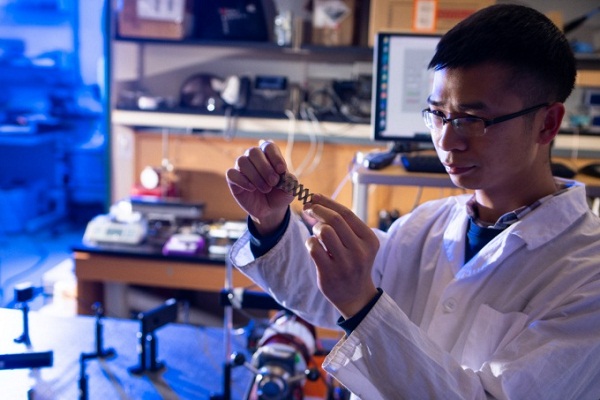A new study shows how a magnetic material can be used to help monitor the amount of life left in a rechargeable battery before it needs to be recharged.
Shenqiang Ren, a scientist and engineer at the University at Buffalo, led the project and explains how the system works.
As lithium-ion batteries charge and discharge, lithium ions flow from one side of the battery to the other. With this in mind, Ren’s team built a lithium-ion battery that uses a special material at one end: a compound whose magnetism changes as lithium ions enter or leave it. This makes it possible to measure the battery’s level of charge by tracking changes in the material’s magnetism, Ren says.
The research was published in the Proceedings of the National Academy of Sciences (PNAS).

A sample of the magneto-ionic material used in a new study. Credit: Douglas Levere / University at Buffalo
In addition to Ren, corresponding authors of the study include Yuguang C. Li, PhD, UB assistant professor of chemistry; Fei Yao, PhD, UB assistant professor of materials design and innovation; and Qimin Yan, PhD, Temple University assistant professor of physics. Yong Hu, a UB PhD student in mechanical engineering, was the first author.
Yulong Huang (right) holds a lithium-ion battery with a cathode made from magneto-ionic material. Huang and Zheng Li (left), both UB postdoctoral researchers in mechanical and aerospace engineering, are among authors of a new study on the magneto-ionic material. Credit: Douglas Levere / University at Buffalo



Source: buffalo










